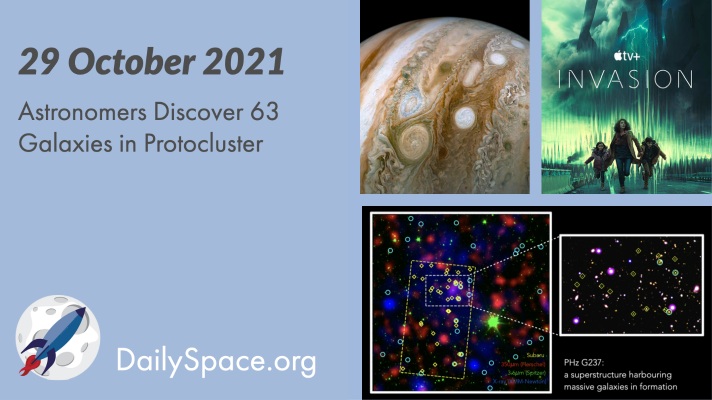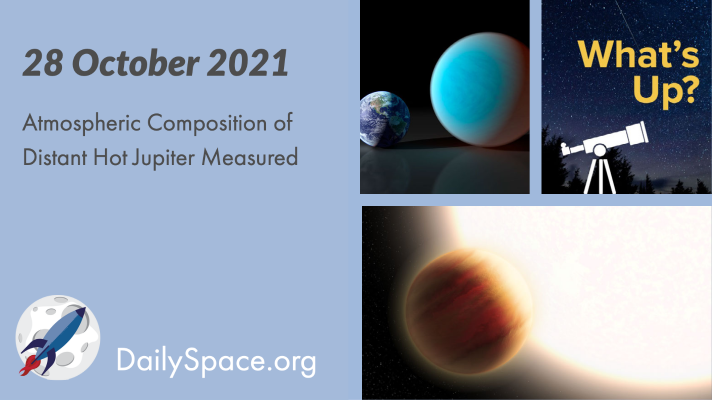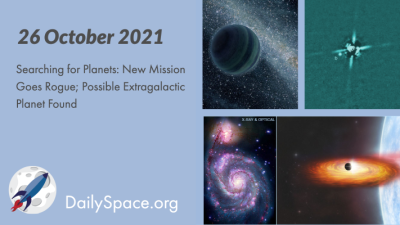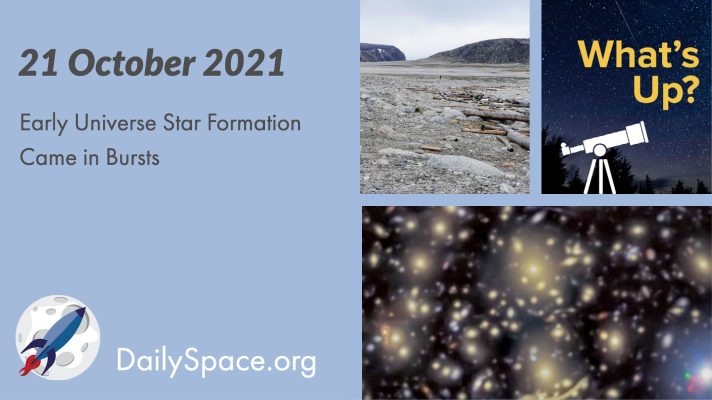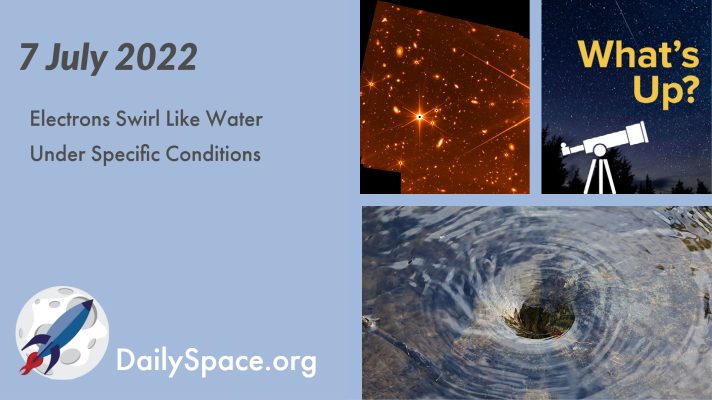
Electrons Swirl Like Water Under Specific Conditions
Using etched tungsten ditelluride at nearly absolute zero, scientists have observed electrons swirling around like whirlpools, behaving as a fluid. The methods could be used to design low-energy devices. Plus, eavesdropping on aliens, machine learning on solar data, and some new observatories are in the works.
Catch us on NowMedia TV
Saturday 11pm Central / midnight Eastern
Sunday 10pm Central / 11pm Eastern
Watch live on these stations: Houston 21.10, Atlanta 22.10
or tune-in on Apple TV, Roku, YouTube Live, or Amazon Prime
Hubble Working Again, Landsat 9 Releases Images, Crew 2 Returns
After a bit of a scare, the aging Hubble Space Telescope has once again resumed its science operations with the ACS instrument brought back online. Plus, Landsat 9 released its first images and the Crew 2 Dragon splashed down safely. Then we interview Dr. Rosanne Di Stefano from the Center for Astrophysics about the potential discovery of the first extragalactic planet.
Astronomers Discover 63 Galaxies in Protocluster
Astronomers researching the G237 protocluster find 63 galaxies within, all producing stars and more galaxies at a high rate, acting as a “shipyard” for their region of the cosmos. Plus, Juno looks inside Jupiter’s cloud bands and a review of “Invasion” on Apple TV+.
Atmospheric Composition of Distant Hot Jupiter Measured
Scientists have measured the composition of the hot Jupiter exoplanet WASP-77Ab using an instrument at the Gemini South observatory as the first step in creating a catalog of exoplanetary atmospheres. Plus, looking for ocean worlds and this week’s What’s Up.
Rocket Roundup for October 27, 2021
This week on Rocket Roundup, we cover a little bit of everything: French, Chinese, and Japanese rockets launch satellites into orbit, and South Korea attempts the first launch of their homemade Nuri rocket but fails to put its payload into orbit. In rocket history, we look back at the first Chinese crewed spaceflight, Shenzhou 5.
Searching for Planets: New Mission Goes Rogue; Possible Extragalactic Planet Found
A proposed mission called the Contemporaneous LEnsing Parallax and Autonomous TRansient Assay, or CLEoPATRA, seeks to work with the Nancy Grace Roman Telescope to find rogue planets not orbiting any star. Meanwhile, a possible planet has been discovered in the Whirlpool Galaxy and could be the first planet found outside the Milky Way. Plus, an interview with Dr. Margaret Meixner, Director of Science Mission Operations for the SOFIA telescope.
Early Universe Star Formation Came in Bursts
Researchers looked at lensed galaxy systems, searched for nearby analogs to those distant systems, and found that in general, the systems showed signs of bingeing star formation and then quiet lulls. Plus, using tree rings to track Arctic ice changes, and this week’s What’s Up.


 We record most shows live, on Twitch. Follow us today to get alerts when we go live.
We record most shows live, on Twitch. Follow us today to get alerts when we go live.


